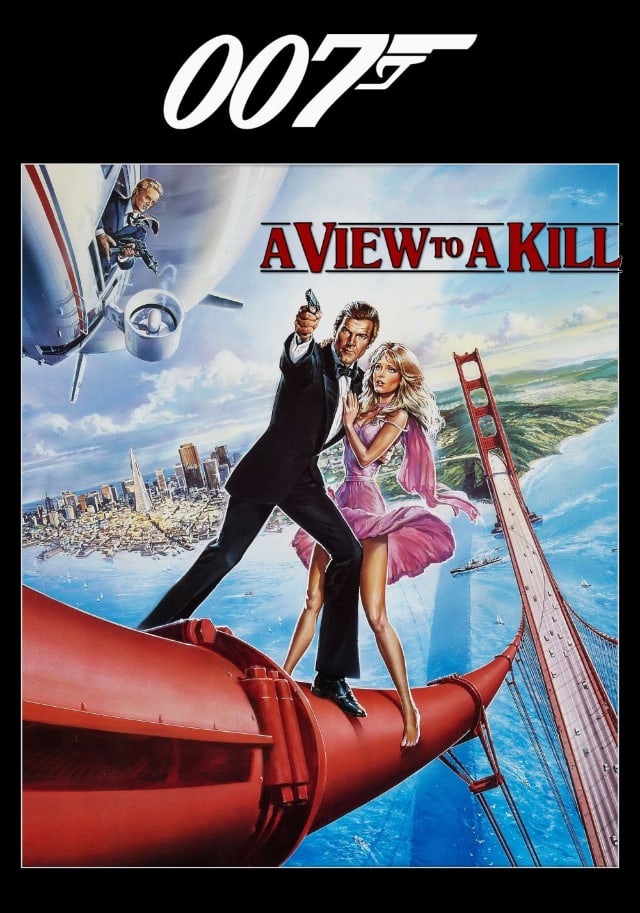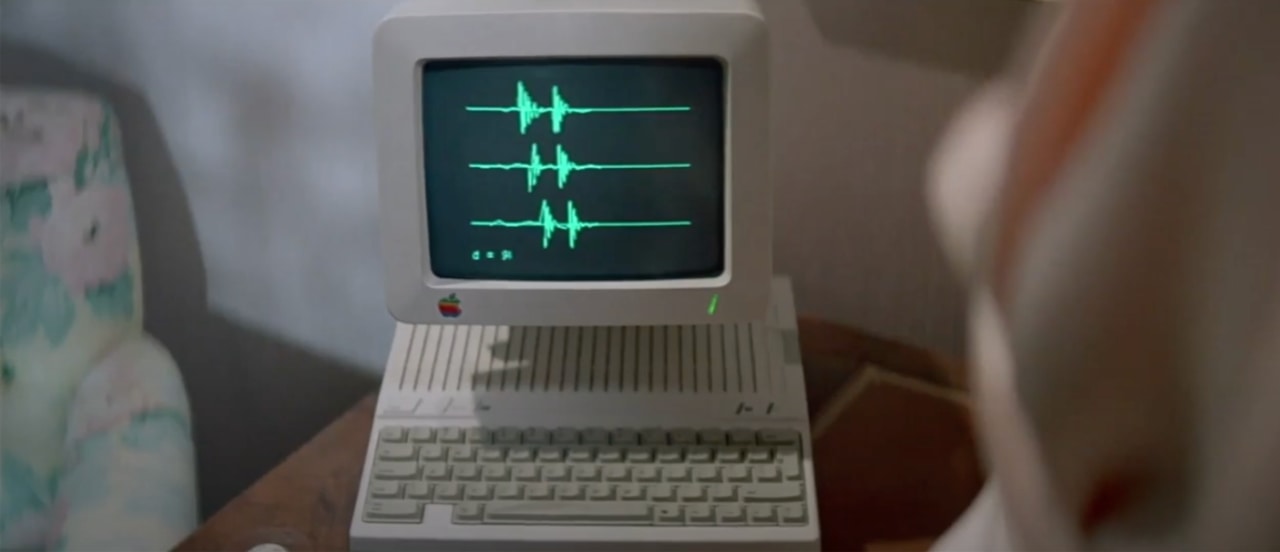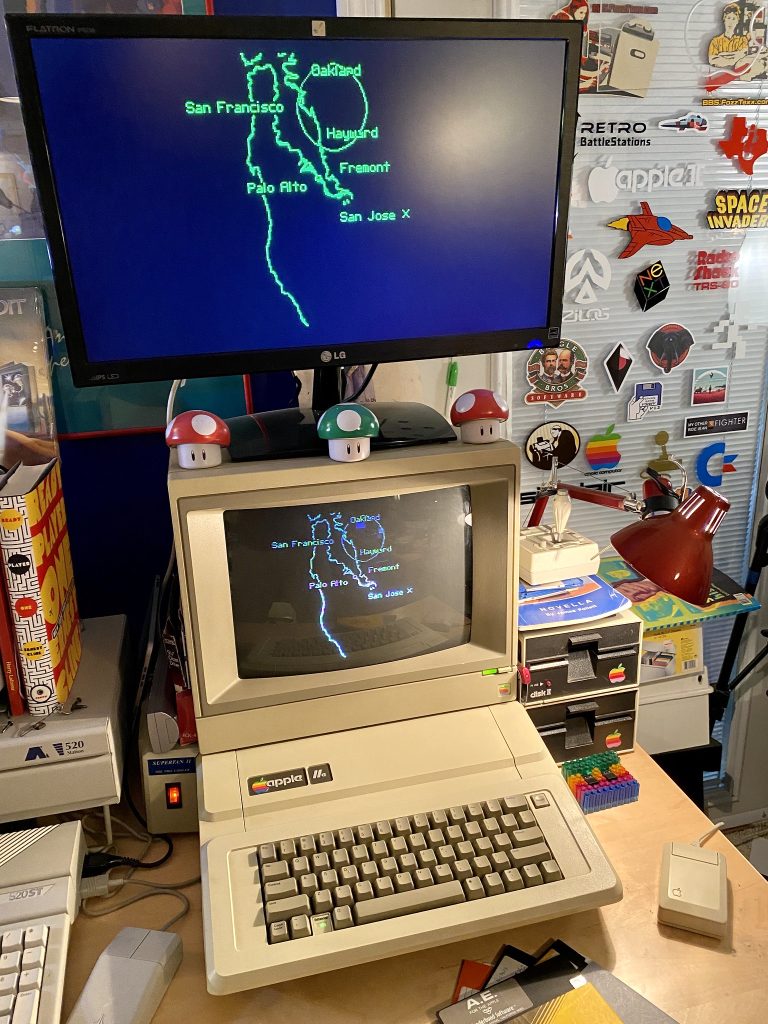
When I think back to the ’80s (as I do quite often), part of that lovely feeling I am conjuring is formed from various stand-out movies of the time. Among those, one that I recall enjoying best is the James Bond film, A View to a Kill. I saw it in the theater as a 13-year old over the summer of 1985. It’s also one of the movies that we had at home on tape that I remember watching the most on our new-fangled (Betamax) VCR.
While, on reflection it is a pretty cheesy movie, it did have it all: action; adventure; settings across the globe; an evil mastermind (Christopher Walken, no less!); a villainous, destructive plot involving Silicon Valley; Grace Jones; a struggle atop the Golden Gate Bridge, and the memorable cameo appearance of an Apple //c computer carrying out a seismic analysis.
At one point in the film, Bond (Roger Moore) and leading lady State Geologist Stacey Sutton (Tanya Roberts) are in Stacy’s home, and beside her bed is an Apple //c (what a weirdo she must be). Bond and Stacey feel a minor tremor and so she uses her //c to connect to The Earthquake Center and find out about the quake. She types a few keystrokes and a series of waveforms appear on the screen, along with some text indicating the strength of the tremor. A couple more keystrokes and the screen changes to a map of the San Francisco Bay area, with a sort-of bulls-eye animation zeroing in on its source (spoiler: it’s near Zorin’s oil fields…).

When I saw this movie, I had an Apple //c of my own (my second computer), and the scene really stood out to me for that reason. I used my //c constantly, and it was easy for me to tell that the program running on screen was actually being (or had been) output from an Apple II, not canned from some unrelated video effects system (noting that the power LED of the pictured main unit (on the right, just above the keyboard) appears to be dim).
It is for the various reasons I have just laid out that I was so struck with amazement in discovering the recent efforts of Max Piantoni. The Apple //c scene in A View to a Kill clearly stood out to Max, as well. What he has done is nothing short of incredible, in my book. As he explains it,
There’s nothing cooler than a computer in a movie, and A View To A Kill has a particularly cool Apple IIc. Join me as I forge this Faberge bit by bit, byte by byte. In this video I meticulously reverse engineer the application from the movie and recreate it on my Apple IIc using Applesoft BASIC and a variety of development tricks. No one was asking, but I sure delivered.
Indeed, Max has perfectly re-created the seismic analysis program, as we saw it in the movie. In his video, he shows the scene in question and walks the viewer through his approaches, the challenges he faced, and his actual BASIC code listing. Within, we get a nice look at Beagle Bros’ Apple Mechanic toolset, used to assist with the on-screen animation. And, what’s more, Max has released the Applesoft BASIC code listing, as well as a booting disk image, on Github.
It’s running on my Apple IIe, right now!
Hats off for the heroic effort, Max. What an incredible tribute to the Apple II and the 1980s, as well! Visit Max Piantoni’s website to have a look at many other great projects he has has worked on.


Pingback: Why the Apple II was great and more – This Geek in Review for 8 May 2020 – Ryan Collins